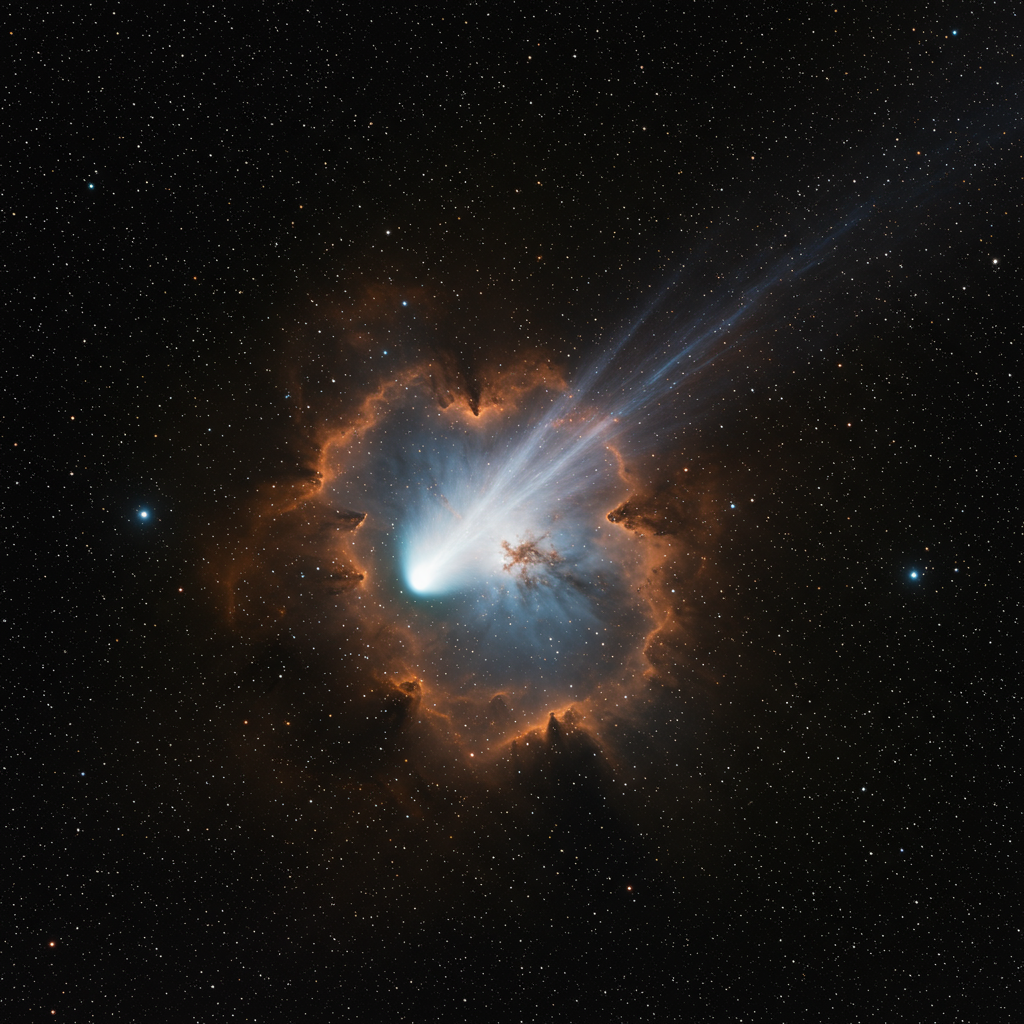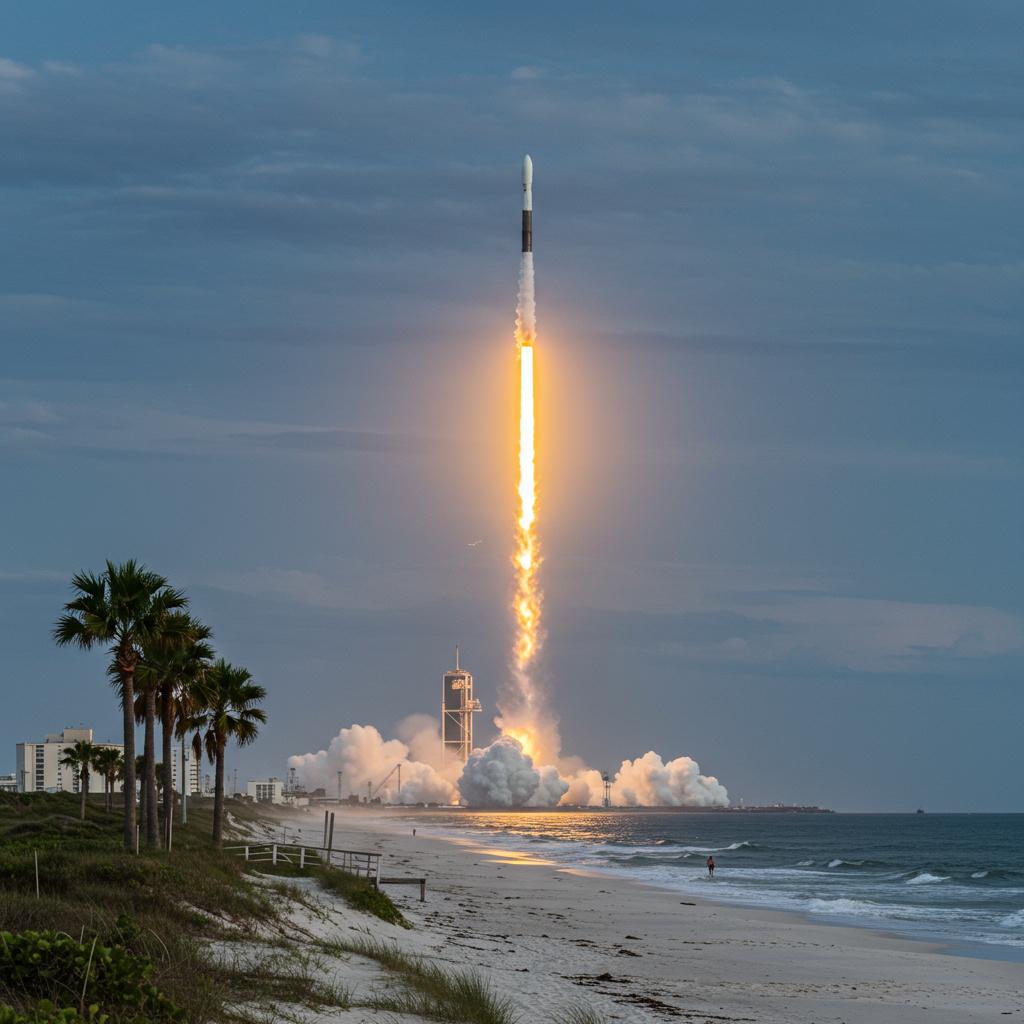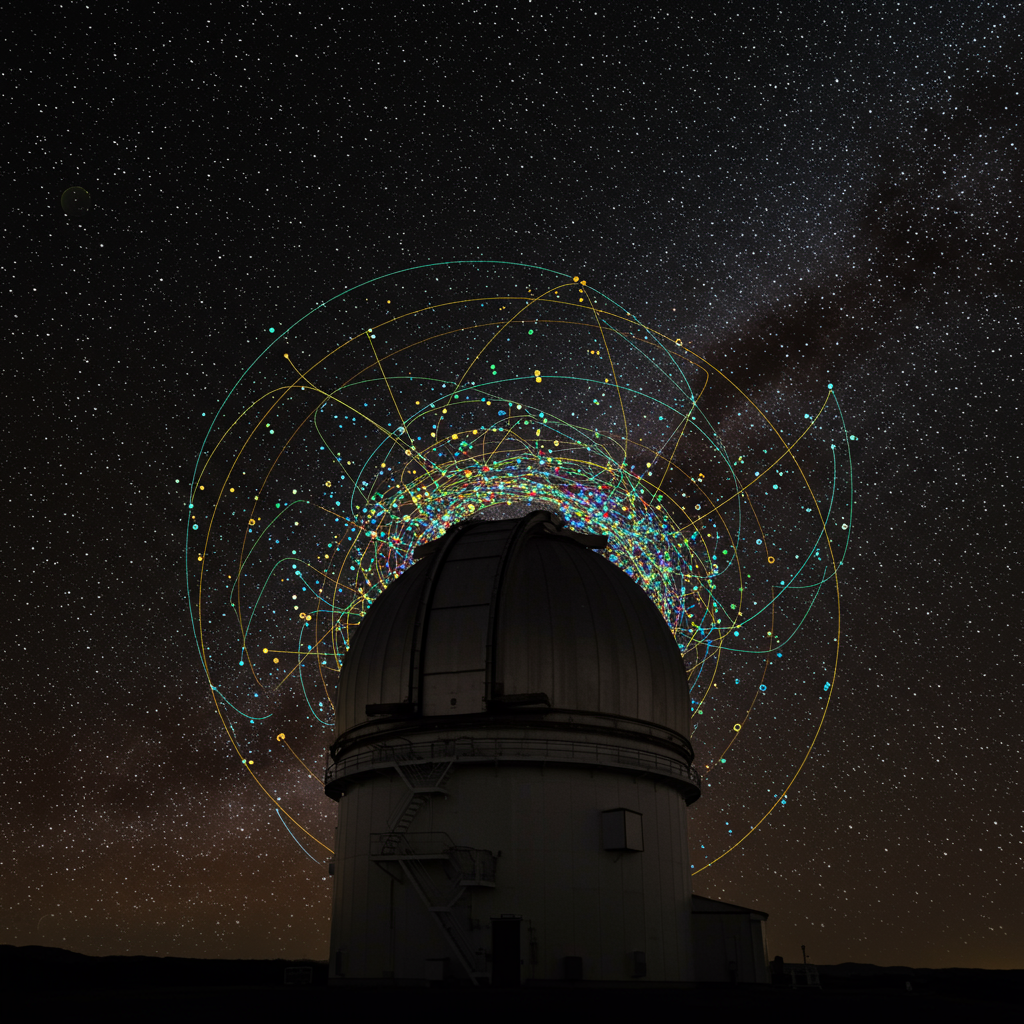The vast expanse of space continuously surprises us, and few celestial phenomena are as captivating as a visitor from beyond our own solar system. Recently, the iconic Hubble Space Telescope has provided unprecedented clarity on one such extraordinary guest: interstellar comet 3I/ATLAS. These groundbreaking observations have not only allowed astronomers to make the most accurate estimate yet of this enigmatic comet’s core size but also underscored its mind-boggling speed, a testament to its ancient, billions-of-years-long journey through the Milky Way. This discovery offers a rare window into the chemistry and formation of planetary systems far, far away, providing genuine value to our understanding of the universe.
Unveiling the Enigmatic Visitor from Afar
On July 1, 2025, the Asteroid Terrestrial-impact Last Alert System (ATLAS) made a startling discovery: a new comet, 3I/ATLAS, barreling into our solar system. Its unusual trajectory and blistering velocity immediately signaled something extraordinary. Just a day later, the Minor Planet Center confirmed its interstellar nature, marking it as only the third such object ever definitively identified. This “I” designation stands for “interstellar,” making 3I/ATLAS a truly rare and significant find.
A Rare Cosmic Interloper
Prior to 3I/ATLAS, only two other confirmed interstellar objects had graced our cosmic neighborhood: 1I/ʻOumuamua in 2017, and 2I/Borisov in 2019. Each of these visitors has offered fleeting glimpses into the material makeup of other star systems. However, 3I/ATLAS, with its distinct cometary activity and observed characteristics, provides unique data points compared to its predecessors. While ‘Oumuamua was oddly shaped and Borisov was a more typical comet, 3I/ATLAS continues to redefine our understanding of these deep-space voyagers.
Precision Measurements: Sizing Up an Icy Heart
One of the primary goals for observing 3I/ATLAS has been to accurately measure its solid, icy nucleus. Earlier ground-based estimates varied widely, from an initial guess of 20 kilometers (12 miles) down to about 10 kilometers (6 miles) from observatories like the Vera C. Rubin. However, the Hubble Space Telescope, with its unparalleled clarity, captured the sharpest-ever image of 3I/ATLAS on July 21, 2025, from an astonishing 277 million miles (446 million kilometers) away. These high-resolution images have allowed astronomers to refine the comet’s dimensions dramatically.
The research now indicates that the upper limit for 3I/ATLAS’s nucleus diameter is 5.6 kilometers (3.5 miles). Intriguingly, it could be as small as 320 meters (1,050 feet) across. To put this into perspective, the famous ‘Oumuamua was about 200 meters at its widest point, while Borisov was less than a kilometer. Despite these advanced measurements, the comet’s solid core itself remains unobservable, even to Hubble’s powerful vision. It’s like trying to see a bullet from miles away; you can gauge its path and general presence, but not its intricate details.
The Elusive Nucleus and Future Insights
Hubble’s observations went beyond just size estimation. They also unveiled a distinct “teardrop-shaped cocoon of dust” and a clear dust plume emanating from the Sun-warmed side of the comet. There was even a subtle hint of a dust tail streaming away. The rate at which 3I/ATLAS is shedding dust is consistent with comets typically detected around 480 million kilometers (300 million miles) from the Sun. This behavior, remarkably, mirrors that of comets originating within our own solar system.
To further unlock the secrets of this interstellar wanderer, scientists are eagerly anticipating data from other advanced observatories. The NASA/ESA/CSA James Webb Space Telescope (JWST), for instance, is poised to provide crucial insights into 3I/ATLAS’s chemical makeup. Collaborations with the Transiting Exoplanet Survey Satellite (TESS), the Neil Gehrels Swift Observatory, and the W.M. Keck Observatory are also planned to offer a more complete picture of this unique celestial body. These combined efforts promise to unravel mysteries that Hubble alone cannot solve.
A Blistering Pace: Evidence of an Epic Journey
One of the most astonishing aspects of comet 3I/ATLAS is its incredible speed. It is currently hurtling through our solar system at approximately 210,000 kilometers per hour (130,000 miles per hour). This is not just fast; it’s the highest velocity ever recorded for any object visiting our solar system. This breathtaking sprint offers compelling evidence of its origin and journey.
Astronomers widely believe this extreme speed signifies that 3I/ATLAS has been drifting through the cold vacuum of interstellar space for many billions of years. Its immense velocity is attributed to the “gravitational slingshot effect.” As the comet passed countless stars and nebulae over eons, their immense gravitational pulls added momentum, progressively ratcheting up its speed. The longer 3I/ATLAS traveled through the galactic void, the faster it became. Some experts, like University of Oxford astronomer Matthew Hopkins, suggest the comet could be more than 7 billion years old, predating our solar system by over 3 billion years.
From Distant Shores to Our Backyard
The defining characteristic of 3I/ATLAS is its interstellar provenance. It originated in some other solar system, light-years away within our vast Milky Way galaxy. Unlike comets born in our own outer solar system, 3I/ATLAS is merely making a temporary detour, a brief flyby before continuing its cosmic journey. Its trajectory clearly indicates it is simply flying through, not orbiting, our Sun.
During its passage, the comet is projected to make its closest approach to the Sun in October 2025, reaching about 2 Astronomical Units (AU) – roughly twice the Earth-Sun distance. It will also pass within approximately 0.4 AU of Mars in October, potentially making it observable by the Mars Reconnaissance Orbiter. For Earth, there’s no cause for concern; its closest approach will be no nearer than 150 million miles (240 million kilometers), well over 1.5 AU. This ensures the safety of our planet while still offering an unparalleled scientific opportunity.
What Interstellar Comets Reveal About the Cosmos
The arrival of 3I/ATLAS is more than just an astronomical curiosity; it represents a profound scientific opportunity. As a tangible piece of another star system, it carries information about the chemical elements and conditions present during its formation. This allows scientists to glean invaluable insights into how planetary systems formed around other stars throughout our galaxy’s history, including those that may have long since died out. David Jewitt, the science team leader for the Hubble observations from UCLA, likened tracing its precise origin to “glimpsing a rifle bullet for a thousandth of a second,” highlighting the difficulty but immense reward of such studies.
Furthermore, the very existence and detection of 3I/ATLAS, coupled with ‘Oumuamua and Borisov, suggests the presence of a “previously undetected population of objects bursting onto the scene.” The recent advancements in powerful sky survey capabilities, like the ATLAS system, are enabling us to discover these interstellar nomads, which were previously too faint or too fast to observe. This growing catalog of interstellar objects promises to revolutionize our understanding of material exchange between star systems and the overall dynamics of our galaxy.
Catching a Glimpse: Observing 3I/ATLAS
For amateur astronomers eager to witness this rare visitor, 3I/ATLAS is projected to remain visible to ground-based telescopes through September 2025. After this period, it will pass too close to the Sun for Earth-based observation during October. However, keen observers can anticipate its reappearance. By November and December, after its perihelion (closest approach to the Sun), it will emerge as a brighter morning object, potentially visible near Venus.
Currently, the comet is quite dim, hovering around magnitude 16.7. This means it requires long exposure images from advanced amateur astronomers equipped with sophisticated telescopes. However, it is expected to gradually brighten to magnitude 16 by August, making it slightly more accessible. For those equipped and interested in locating it, star charts are available, detailing its path as it passes near various stars and galaxies in constellations like Libra, Virgo, and Leo during these months.
Frequently Asked Questions
What is Comet 3I/ATLAS, and why is it so unique?
Comet 3I/ATLAS is an interstellar comet, meaning it originated from another star system outside our own Solar System. It is only the third such object ever confirmed, making it exceptionally rare. Its uniqueness stems from its origin, its astonishing speed—the fastest ever recorded for a solar system visitor—and the insights it offers into the chemical composition and formation conditions of distant planetary systems. Discovered on July 1, 2025, by the ATLAS system, it’s currently making a brief flyby before continuing its journey through the Milky Way.
How did scientists determine the size and speed of 3I/ATLAS?
Scientists determined the size and speed of 3I/ATLAS primarily through observations from the Hubble Space Telescope and other ground-based observatories. Hubble captured the sharpest-ever image on July 21, 2025, allowing astronomers to estimate its solid nucleus’s diameter to be between 320 meters and 5.6 kilometers. Its extraordinary speed of 210,000 kilometers per hour was measured by tracking its trajectory and is attributed to the cumulative gravitational slingshot effect from billions of years of traveling through interstellar space, passing countless stars and nebulae.
What can interstellar comets like 3I/ATLAS teach us about other star systems?
Interstellar comets serve as invaluable messengers from distant star systems. By analyzing their chemical makeup, particularly with instruments like the James Webb Space Telescope, scientists can infer the elemental composition and environmental conditions of the protoplanetary disks where they formed. This provides direct evidence about how planetary systems coalesced around other stars, including those that may have long since ceased to exist. Their discovery also suggests a previously undetected population of such objects, hinting at a vast exchange of material between star systems within our galaxy.
The continued study of interstellar comet 3I/ATLAS by various NASA missions and international collaborations is set to significantly enhance our understanding of these enigmatic objects from beyond our home. As new data streams in, we anticipate even more profound revelations about the cosmic origins and the dynamic nature of our galaxy.




